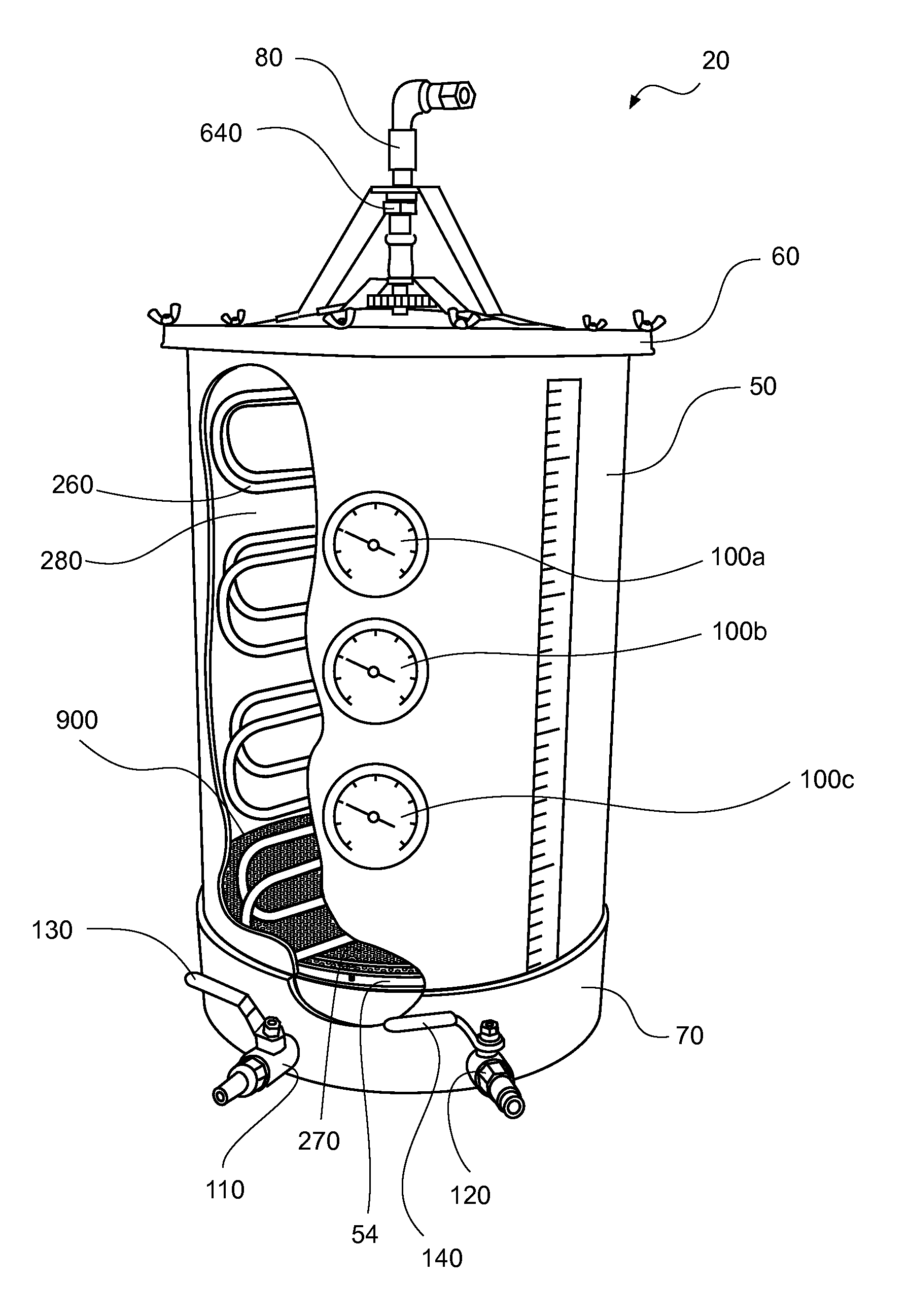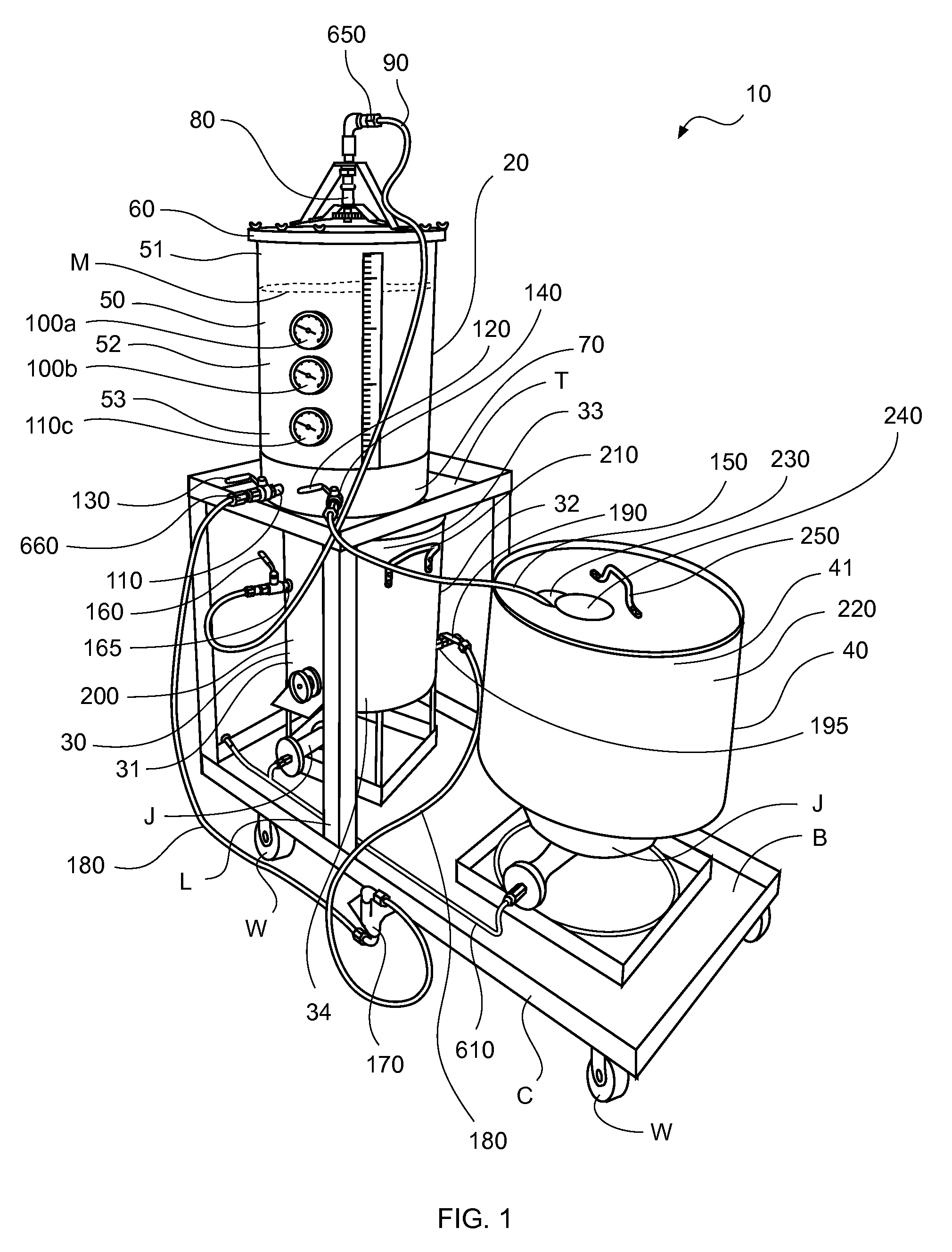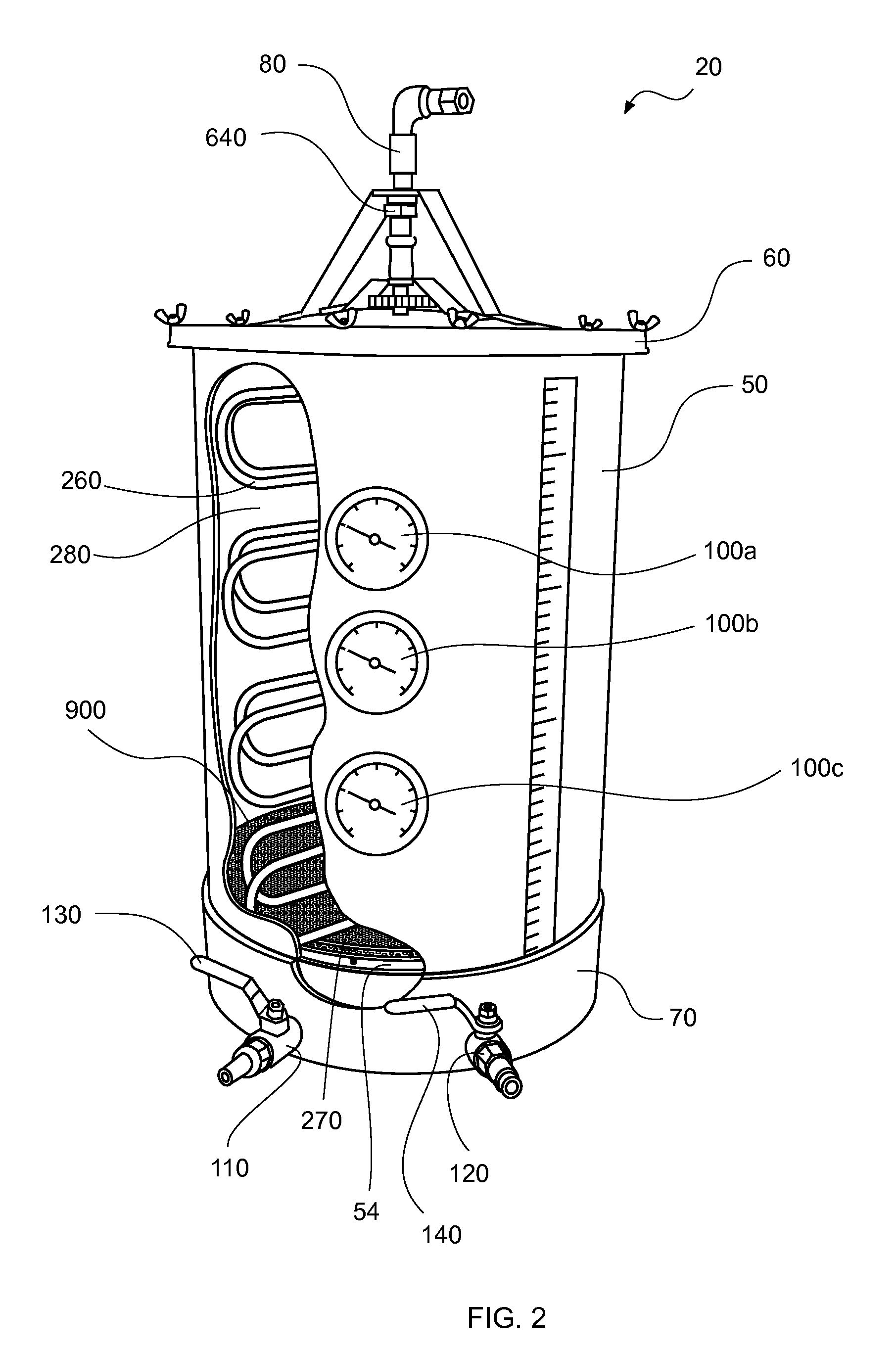Mash/lauter tun and method of use thereof
a technology of mash and mash, which is applied in the field of mash/lauter tun and method of use thereof, can solve the problems of high investment of home brewers, high cost, and high cost of separation of wort and mash, and achieve the effect of convenient separation from mash for collection
- Summary
- Abstract
- Description
- Claims
- Application Information
AI Technical Summary
Benefits of technology
Problems solved by technology
Method used
Image
Examples
Embodiment Construction
[0060]In describing the preferred and selected alternate embodiments of the present invention, as illustrated in FIGS. 1-9, specific terminology is employed for the sake of clarity. The invention, however, is not intended to be limited to the specific terminology so selected, and it is to be understood that each specific element includes all technical equivalents that operate in a similar manner to accomplish similar functions.
[0061]Brewing comprises several steps in which malted barley is converted to mash, and mash is converted to wort. In order to accomplish this process, malted barley is mixed with warm water and held at a constant temperature, thereby forming mash. Once mash is formed, wort is produced by undergoing mashing and separating. During the mashing process, enzymes cause chemical reactions to break down the complex starches in the barley into simple sugars, thus making wort. As described more fully hereinabove and below, the production of wort takes place in a mash / la...
PUM
| Property | Measurement | Unit |
|---|---|---|
| constant temperature | aaaaa | aaaaa |
| temperature | aaaaa | aaaaa |
| pressure | aaaaa | aaaaa |
Abstract
Description
Claims
Application Information
 Login to View More
Login to View More - R&D
- Intellectual Property
- Life Sciences
- Materials
- Tech Scout
- Unparalleled Data Quality
- Higher Quality Content
- 60% Fewer Hallucinations
Browse by: Latest US Patents, China's latest patents, Technical Efficacy Thesaurus, Application Domain, Technology Topic, Popular Technical Reports.
© 2025 PatSnap. All rights reserved.Legal|Privacy policy|Modern Slavery Act Transparency Statement|Sitemap|About US| Contact US: help@patsnap.com



